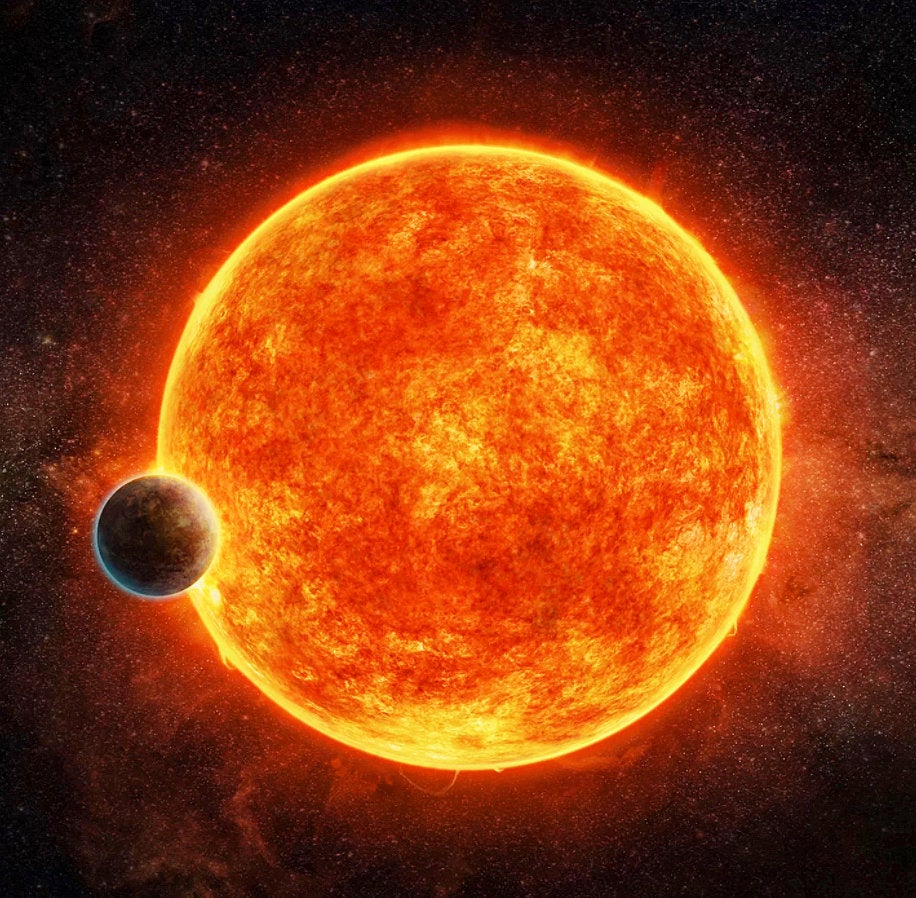
A newly seen alien planet sets a new record as the lowest-mass world ever detected around a sun-like star using direct imaging, astronomers report in a paper to be published in The Astrophysical Journal.
The research team used infrared data from the Subaru Telescope in Hawaii to capture the exoplanet, dubbed GJ 504b. The magenta-colored planet is several times the mass of Jupiter and similar in size.
"If we could travel to this giant planet, we would see a world still glowing from the heat of its formation with a color reminiscent of a dark cherry blossom, a dull magenta," Dr. Michael McElwain, a member of the discovery team at NASA's Goddard Space Flight Center in Greenbelt, Md., said in a written statement. "Our near-infrared camera reveals that its color is much more blue than other imaged planets, which may indicate that its atmosphere has fewer clouds."
 This composite combines Subaru images of GJ 504 using two near-infrared wavelengths (orange, 1.6 micrometers, taken in May 2011; blue, 1.2 micrometers, April 2012). Once processed to remove scattered starlight, the images reveal the orbiting planet, GJ 504b.
This composite combines Subaru images of GJ 504 using two near-infrared wavelengths (orange, 1.6 micrometers, taken in May 2011; blue, 1.2 micrometers, April 2012). Once processed to remove scattered starlight, the images reveal the orbiting planet, GJ 504b.
The pink planet is around four times more massive than Jupiter and orbits the star GJ 504 as part of the young 160-million-year-old star system, Space.com reported.
"Our sun is about halfway through its energy-producing life, but GJ 504 is only one-thirtieth its age," McElwain said in the statement. "Studying these systems is a little like seeing our own planetary system in its youth."
The exoplanet challenges the core-accretion model of star formation, which holds that Jupiter-like worlds form when space rock collisions create a core, pulling in gas from debris surrounding its star. But GJ 504b's orbit of its star seems not to allow for this gravitational pull -- so what gives?
"This is among the hardest planets to explain in a traditional planet-formation framework," Markus Janson, a Hubble postdoctoral fellow at Princeton University in New Jersey, said in the statement. "Its discovery implies that we need to seriously consider alternative formation theories, or perhaps to reassess some of the basic assumptions in the core-accretion theory."

